Zakynthos, Greece is the southernmost of the islands in the Ionian Sea and was called the Fiore di Levante (the Flower of the East) by the Venetians who ruled here in the 15th century and also gave the island its alternative name of Zante.
The island has dominating cliffs to the west, fertile plains at its heart and gorgeous white sand beaches, some punctuated with sea caves and grottoes, dotted around its north, east and south coasts.
Viewed from the air, this island jewel is shaped somewhat like an arrowhead and its charming mix of history, beauty, amazing food, and delicious wine are likely to see its tip aimed straight for your heart.
Why Visit Zakynthos, Greece
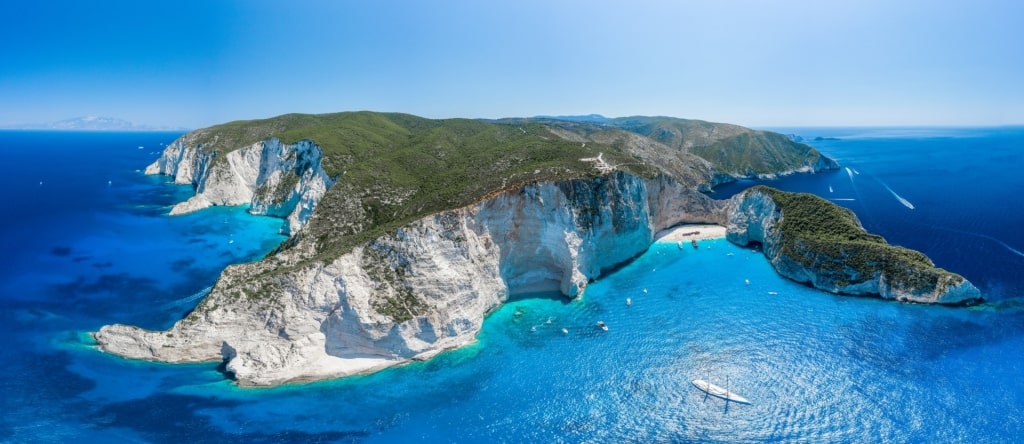
Zakynthos
Where to start might be a better question here. First up, there are the beaches which are among the best in the Mediterranean, regularly topping lists of favorite stretches of sands in Greece.
Then there are the sunsets that Greece is known for, long and deep as the sun sinks into the sea each evening, painting the skies with swirling shades of crimson, hot pink and pale yellow.
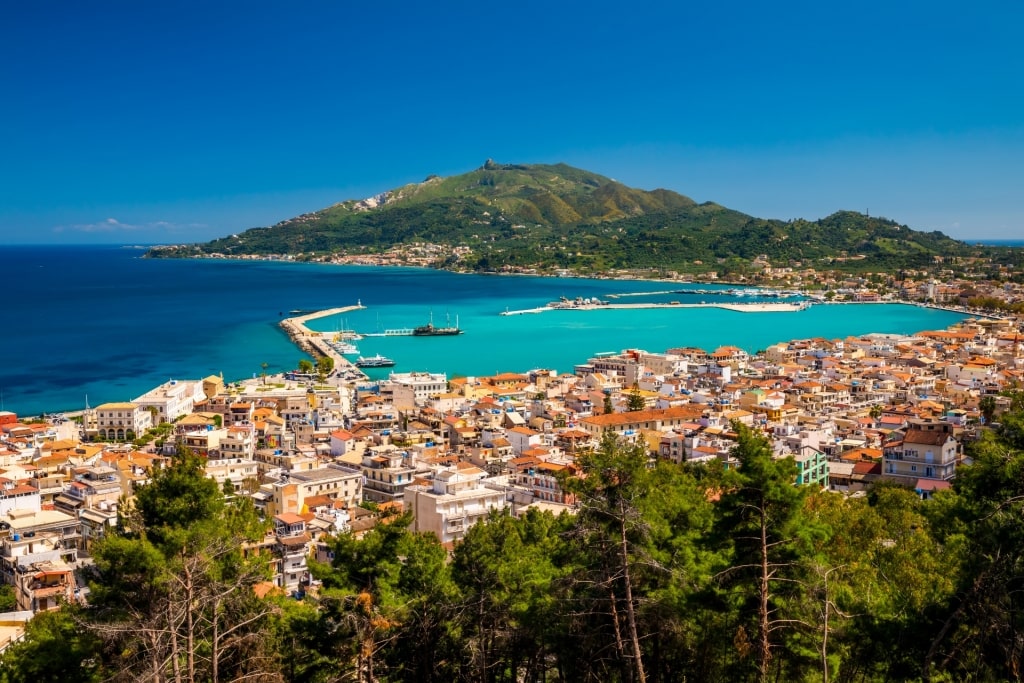
Zakynthos Town/Chora
Towns and villages range from sleepy hamlets dotted with olive trees to the capital of Chora, with its beautiful mix of Venetian, French and English-style architecture, and ancient castle.
If it’s natural beauty you’re after, Zakynthos has it in spades: vast, towering cliffs drop into hidden coves of pure white sand lapped by the deepest of blue seas, while the inland regions are as green as you’ll see on a Greek island.
Foodies will not be disappointed either: the island’s checkered history means that traditional Greek meze is fused with fresh seafood, rich Ionian stews and Italian-inspired pasta, all washed down with fine wines produced right here on the island itself.
History & Culture
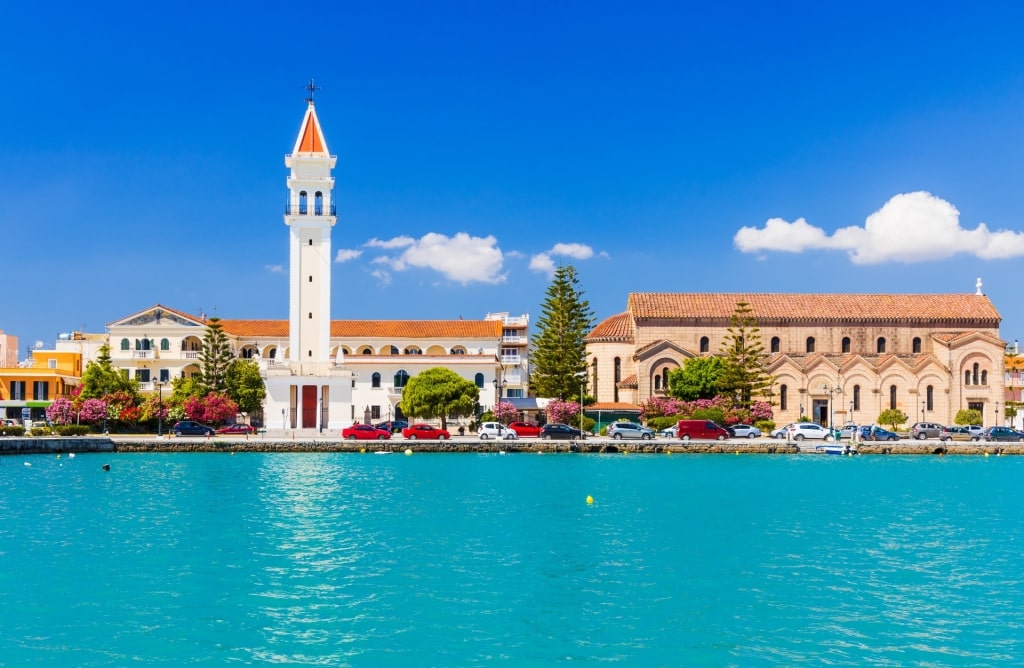
Zakynthos Town/Chora
A key player in the famed Trojan Wars of Greek mythology, Zakynthos features heavily in both of Homer’s classic tomes about the battle and its aftermath, the Iliad and the Odyssey.
After changing alliances several times in the pre-Christian era, the island’s strategic position in the Mediterranean made it a much-prized asset.
Zakynthos was subjected to attacks from the Vandals and various pirate hordes, as well as various periods of rule by the Ottomans, Byzantines, Venetians, French, British and, during World War II, the Germans.
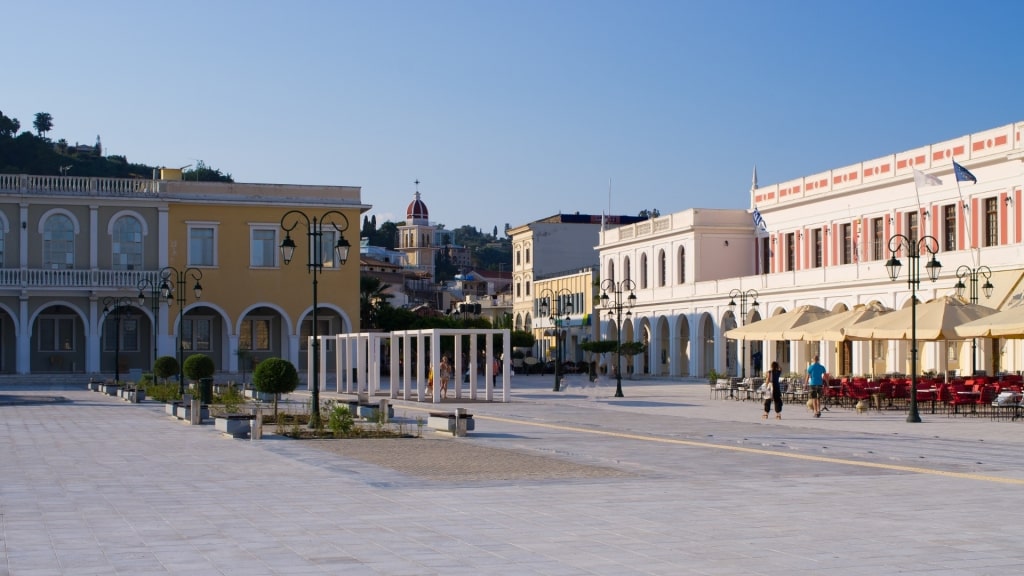
Town Square, Zakynthos Town/Chora
Ordinarily, this passing of the spoils of conflict between the superpowers of the era would lead to a beguiling mix of architectural styles, and so it did on Zakynthos, especially in the capital Zakynthos Town, colloquially known as Chora.
Sadly, a catastrophic 1953 earthquake razed much of the island and there are but a few old palazzos and a Venetian-era fort intact from the old days.
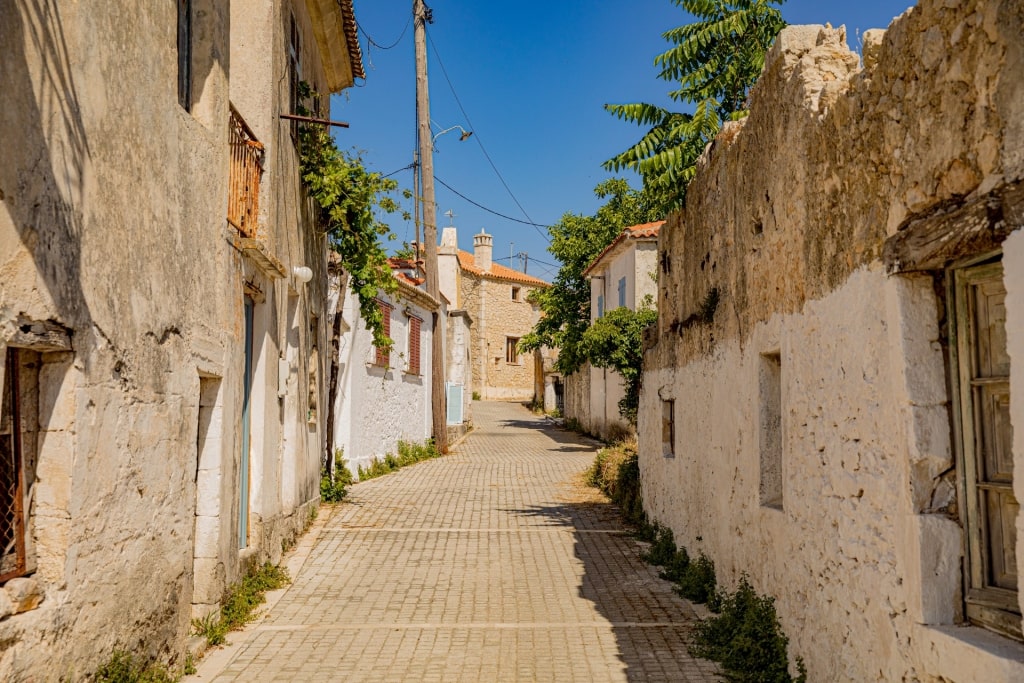
Zakynthos Town/Chora
Despite this, the subsequent rebuild has been sympathetic to the history to the point and, in places, Chora is so pristine it resembles a film set.
When it comes to the arts, Zakynthos punches far above its weight, as the birthplace of Dionysios Solomos, the most important Greek poet of the 19th century, lyricist for the Greek national anthem and founder of the popular Ionian school of poetry. His contemporary, Andreas Kalvos, and another important 19th-century writer was also born on the island.
Wildlife & Nature
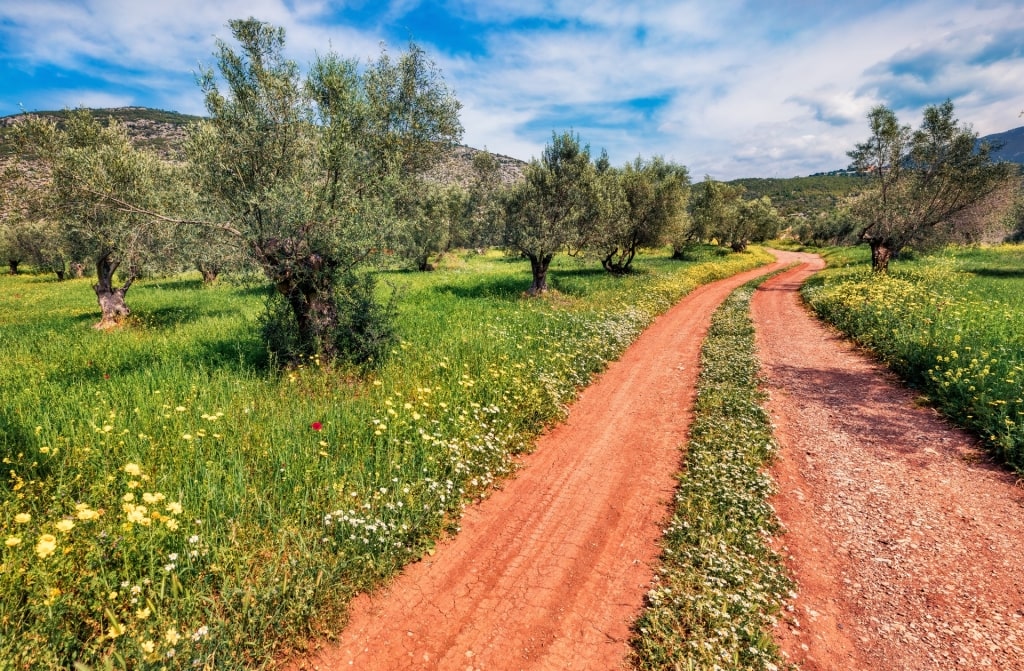
Zakynthos
Zakynthos has fertile soil and, like many Greek islands in the Ionian Sea, is much greener than its counterparts in the Aegean. Plant life is wide and varied with scarlet bougainvillea and wild roses often lining the roadsides, as well as adding a dash of color to white-washed buildings as they flourish in terracotta pots in the yards of homes and shops.
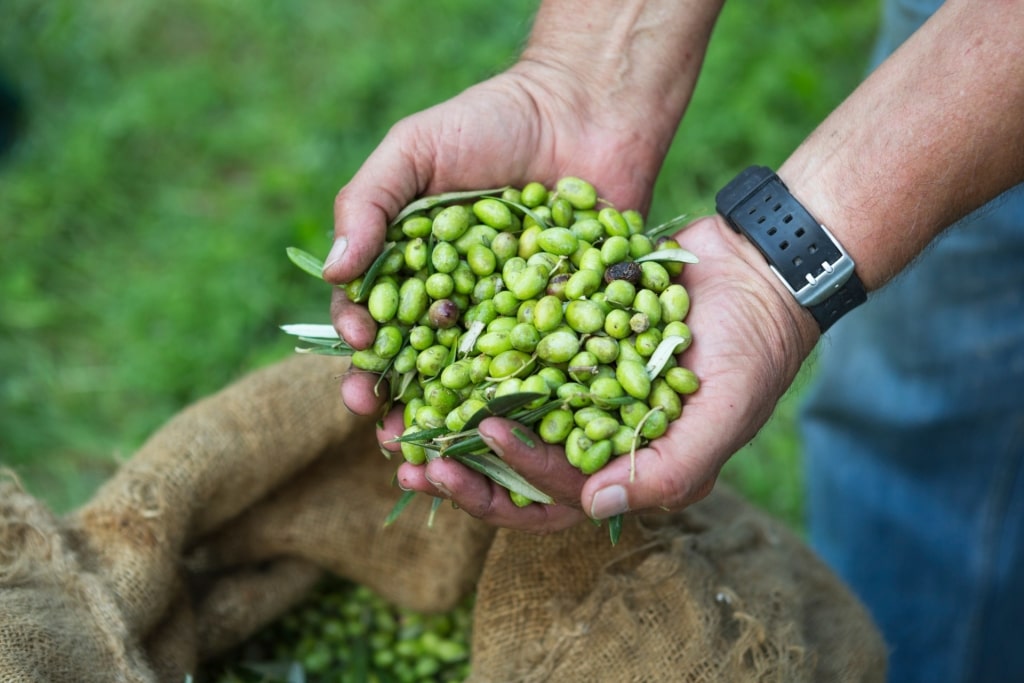
Olives
The island also relies mainly on organic, locally grown food with figs, oranges, almonds, walnuts, olives, and grapes abundant, alongside many wild herbs such as basil, dill, parsley, and rosemary that are particularly fragrant on early morning country walks.
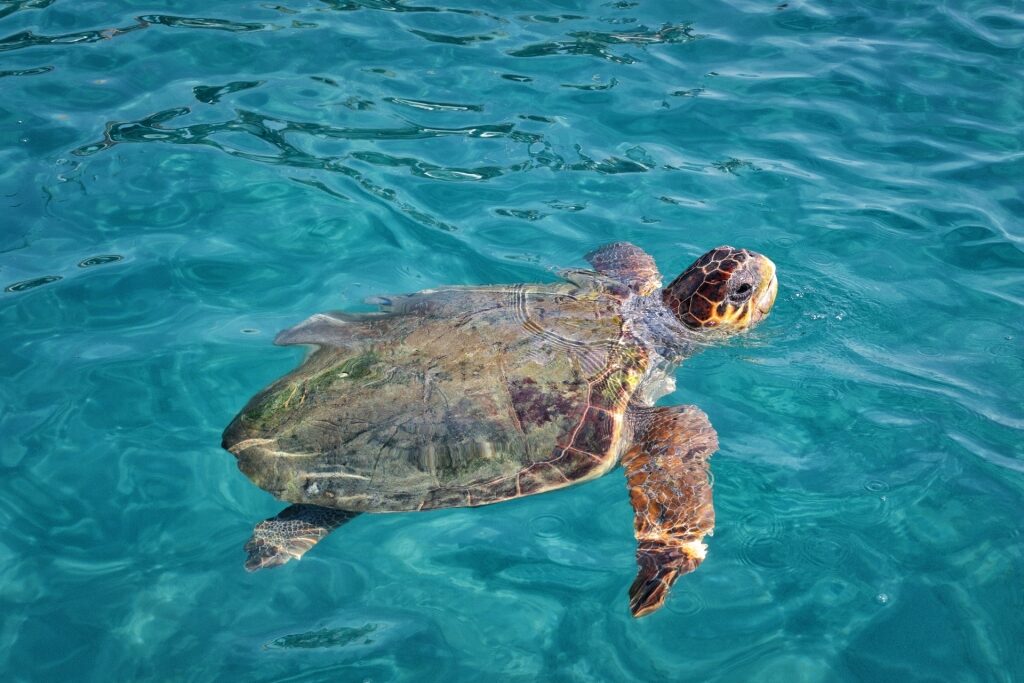
Loggerhead caretta caretta sea turtle
Butterflies, birds, and geckoes abound, but it is in the ocean that Zakynthos’s wildlife excels thanks to the National Marine Park of Zakynthos that helps preserve not one but two endangered species: the loggerhead caretta caretta sea turtle and the Mediterranean monk seal monachus monachus.
Both have protected breeding grounds here and there are a number of ways in which visitors can donate or offer help to organizations furthering the island’s diversity.
Tips for Visiting Zakynthos
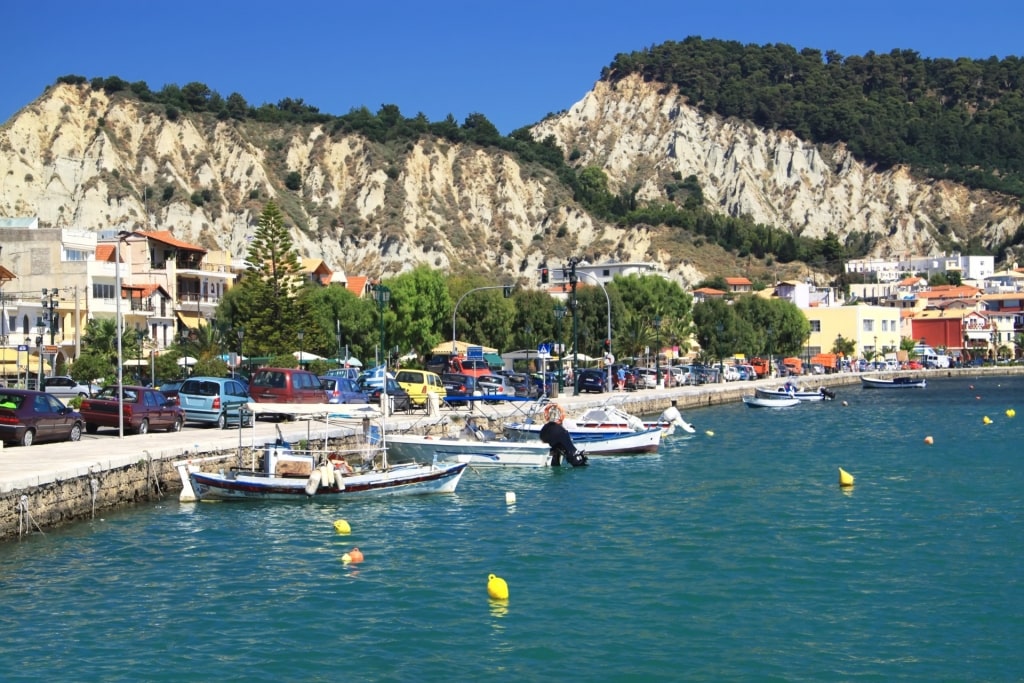
Zakynthos
Zakynthos is one of the most manageable Greek islands to get around. The roads are fairly well constructed but the main attractions are relatively dispersed. A walk around Chora makes for a pleasant few hours for those looking for a more relaxing visit.
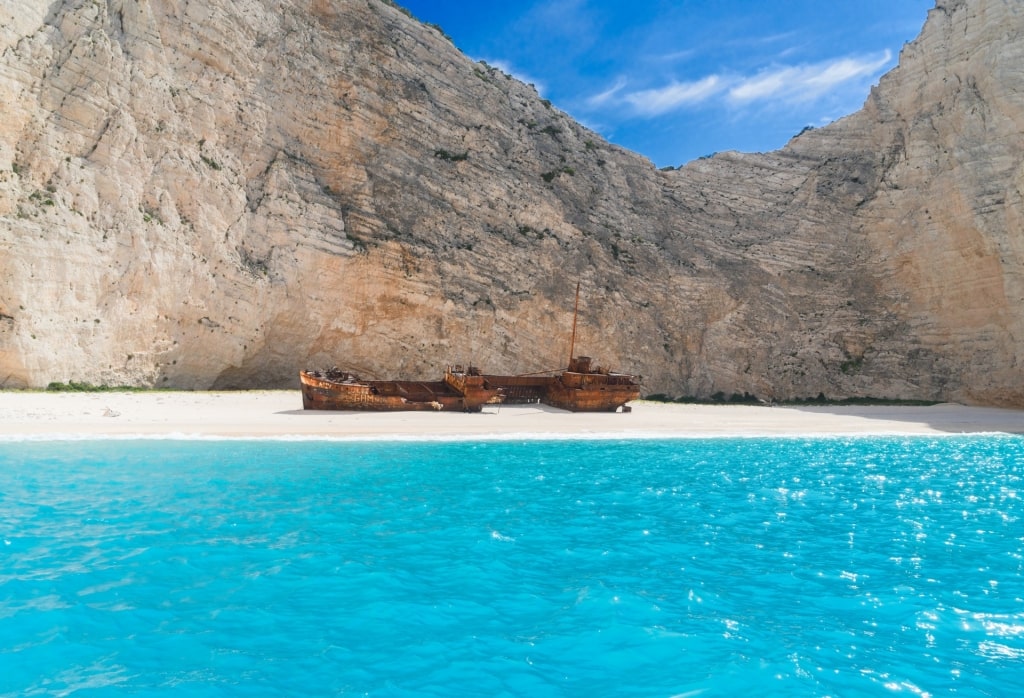
Navagio/Shipwreck Beach
But the other two key sights, Navagio Beach and the Marine Park, are diametrically opposed on the north and south shores of the island, so you need to plan your day accordingly.
The resorts of Alykanas and Laganas are big, brash and set out to appeal to younger party-seeking visitors. If peace and quiet are high on the agenda, these are probably best left to those aged between 18 and 30.
Things to Do & Attractions in Zakynthos, Greece
Visit Navagio/Shipwreck Beach
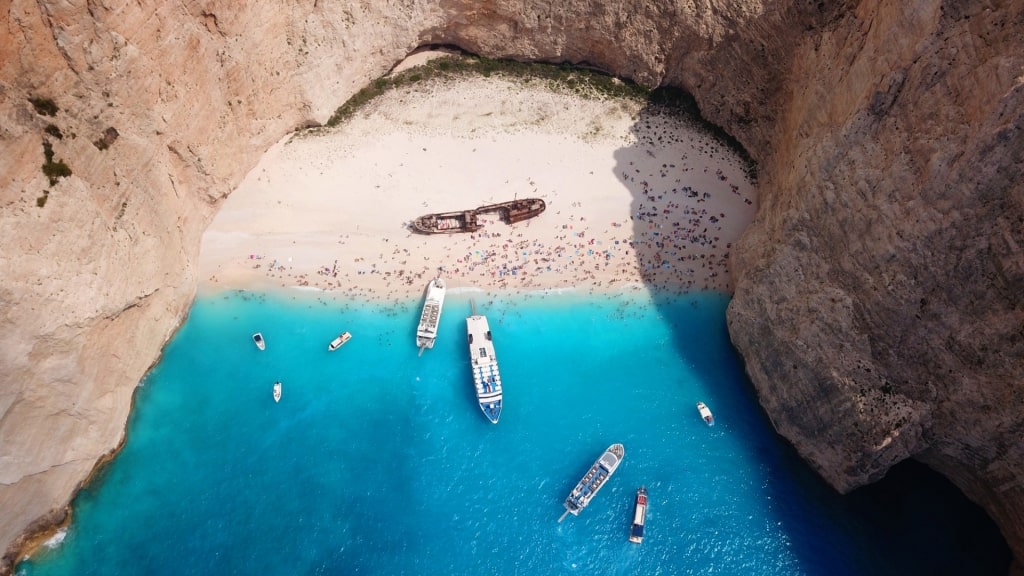
Navagio/Shipwreck Beach
Among the most photographed beaches in the world, a visit to Navagio remains the number one undisputed “must do” on the island. Limestone cliffs some 200 feet high protect a stretch of seemingly perfect sand lapped by shallow waters that makes this one of the best beaches in Greece.
In the middle lie the rusty remains of MV Panayiotis, an alleged smuggler ship that came to ground in the 1980s while being chased by the Greek coastguard. (For balance, it should be noted the ship’s captain denies any of this.)
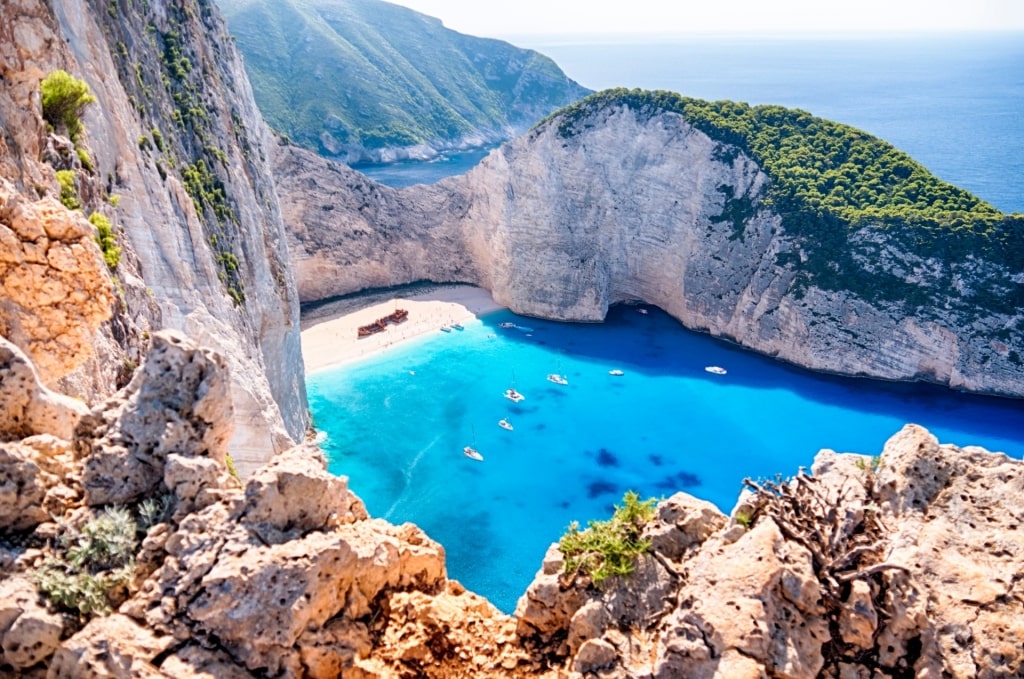
Navagio/Shipwreck Beach
In high summer, this Greek landmark can be very busy, and morning and late-afternoon visits are best to avoid some of the crowds. It’s also worth noting that while the beach really is a gem, the most iconic pictures of it can be had from the cliffs above and they can be tricky to negotiate for those not sure of their footing.
Admire Nature in the National Marine Park of Zakynthos
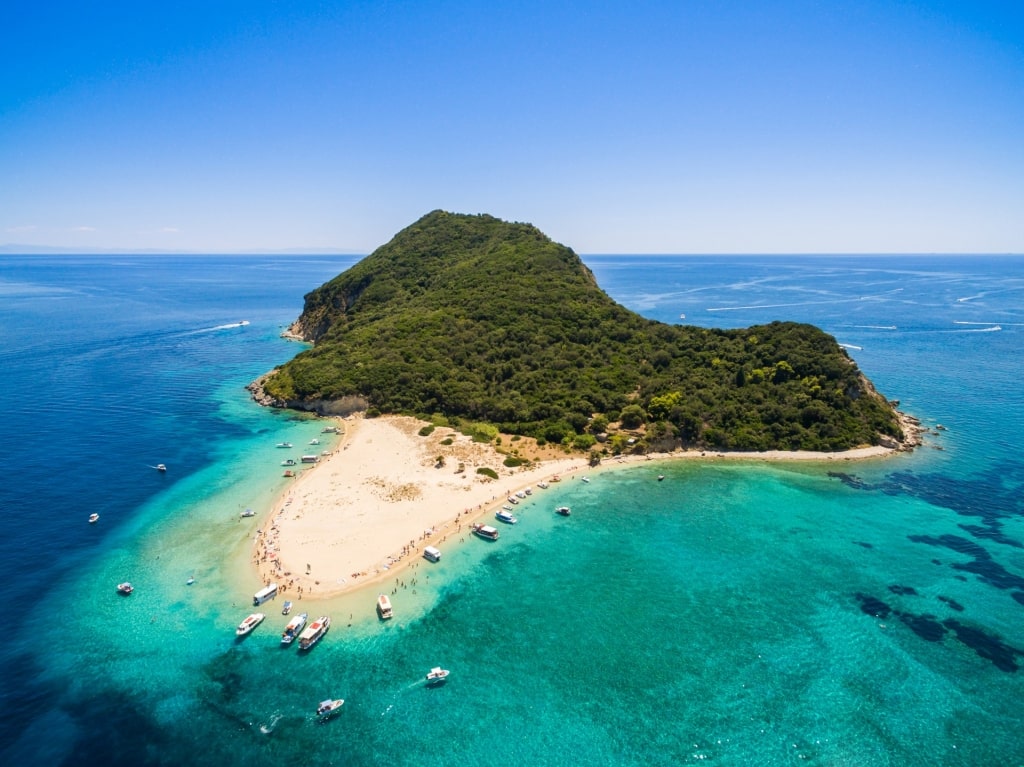
National Marine Park of Zakynthos
The National Marine Park is a vast stretch of beach and ocean extending along the south coast and is a prime breeding ground for the loggerhead sea turtle.
It’s thought that 80 percent of the Mediterranean’s population is born on the beaches here and there are a number of organizations that help protect and facilitate the survival of this endangered species.
The best place to get an overview of their work is the associated Exhibition Center in the village of Dafni, a small but information-packed space that also helps coordinate volunteer efforts.
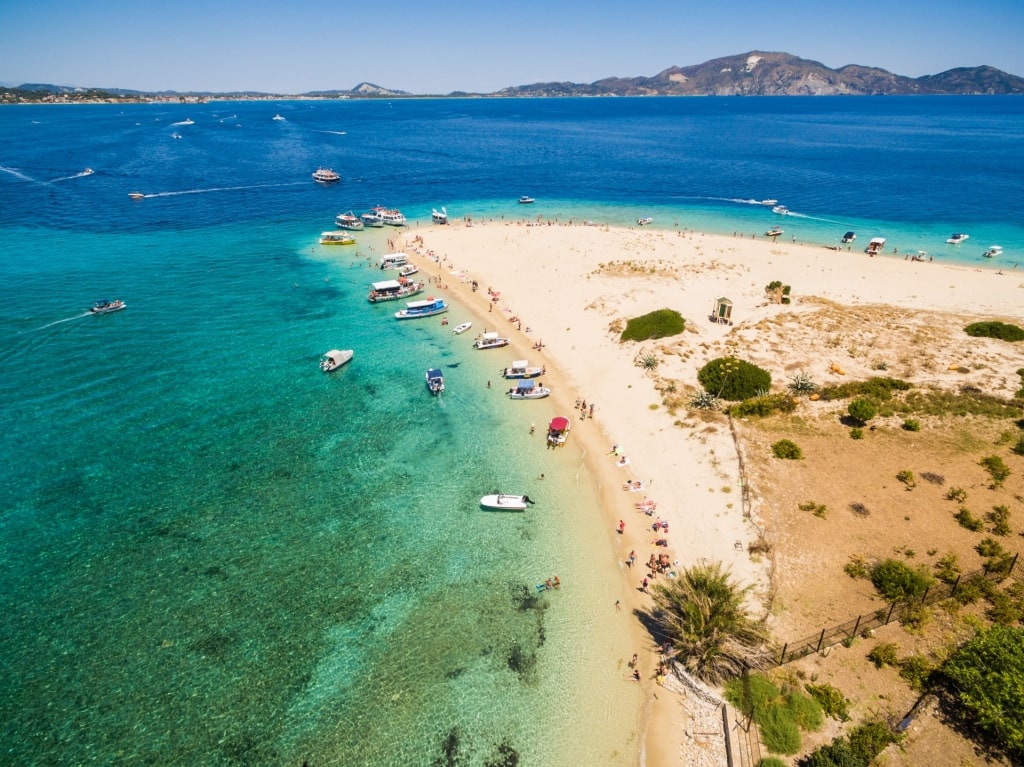
National Marine Park of Zakynthos
There are several beautiful beaches and islets in the Marine Park where you can relax and swim, but you must abide by the rules of the park when it comes to protecting nature, particularly the turtle nests, which are marked by cages in the sand.
Cool Off in the Blue Caves
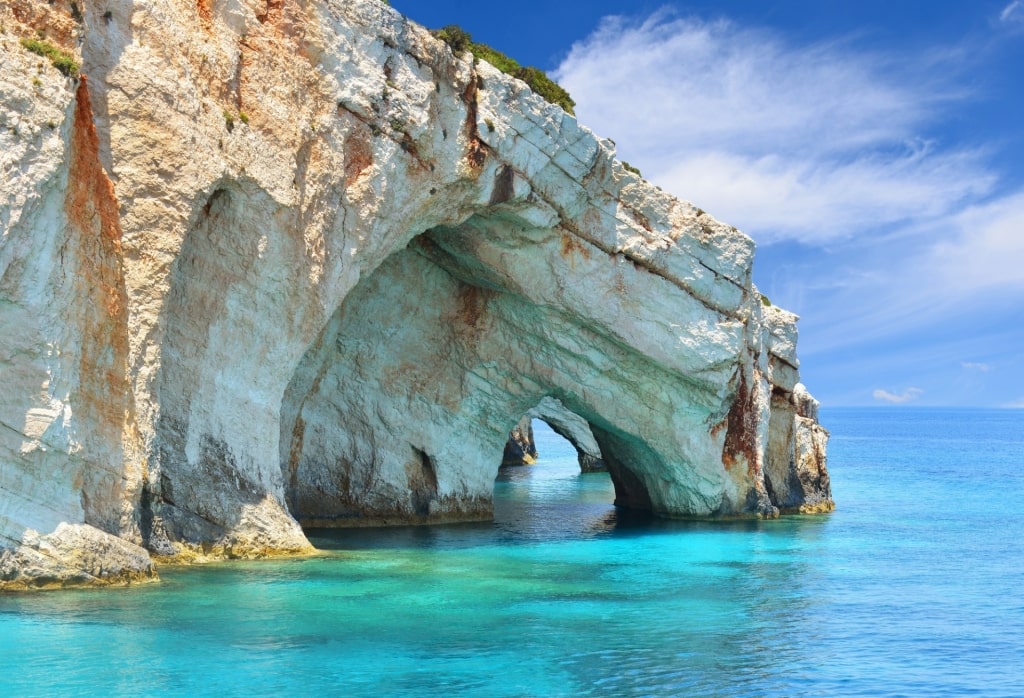
Blue Caves
Zakynthos is home to some of the best beaches in the Mediterranean but can be busy in high season. A great way to enjoy the ocean is to take a boat trip to the succession of caves and grottoes that are dotted around the north coast.
Travel via speedboat into these hidden gems—many of them are inaccessible by road— and take a dip or snorkel into the cooling waters as myriad shades of blue and green reflect from the cave walls in a sparkling natural display.
Explore Chora
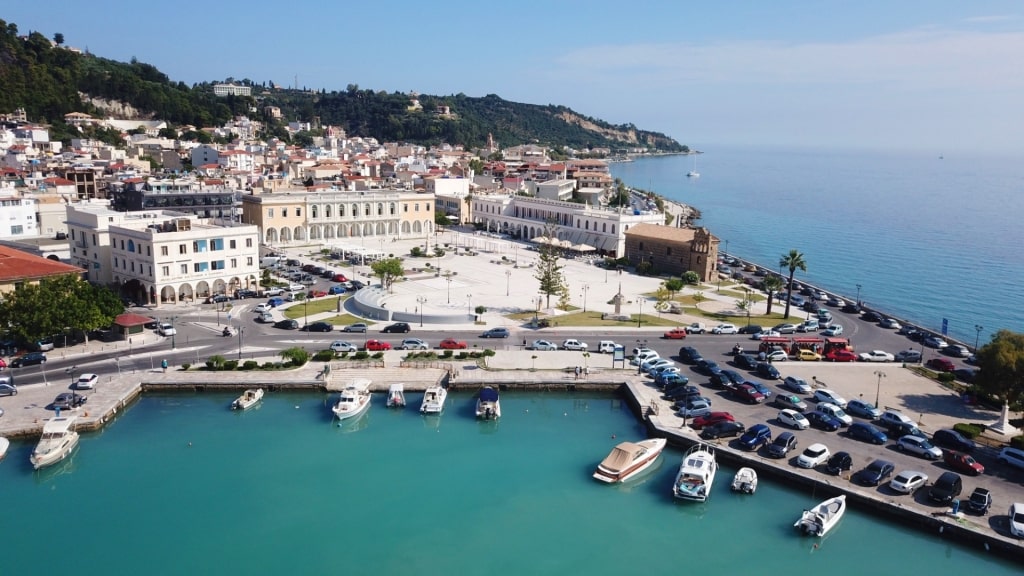
Zakynthos Town/Chora
The narrow winding streets of Zakynthos Town/Chora are a great place to explore and get to know the island and its history better.
Take a stroll along the pretty port front and sip on iced coffee in a café on the main Solomos Square to the sound of backgammon dice hitting the board as locals while away the hours.
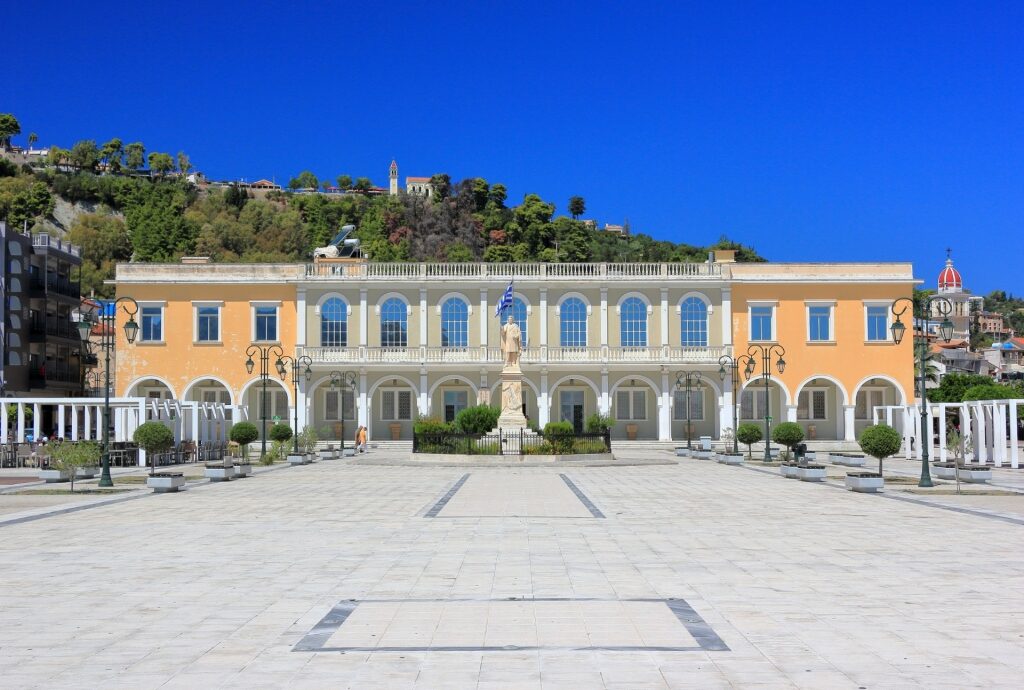
Museum of Zakynthos
Follow this up with a visit to see great works of Ionian art and rare icons at the Museum of Zakynthos, housed in a handsome neoclassical building overlooking the square’s statue of famed Zakynthian poet Dimitris Solomos.
His life and times are displayed alongside those of other local greats in the nearby quaintly named Museum of Dionysios Solomos and Other Eminent People of Zakynthos. The museum is also home to the remains of both Solomos and fellow poet and the island’s other famous son, Andreas Kalvos.
A cemetery from the period of English rule in the Hagia Triada neighborhood is also worth a visit. Listed as a historic monument, the gravestones of English consuls and merchants here bear fine examples of sculpture and stone carving from the 17th to 19th centuries.
Visit the Venetian-Era Castle
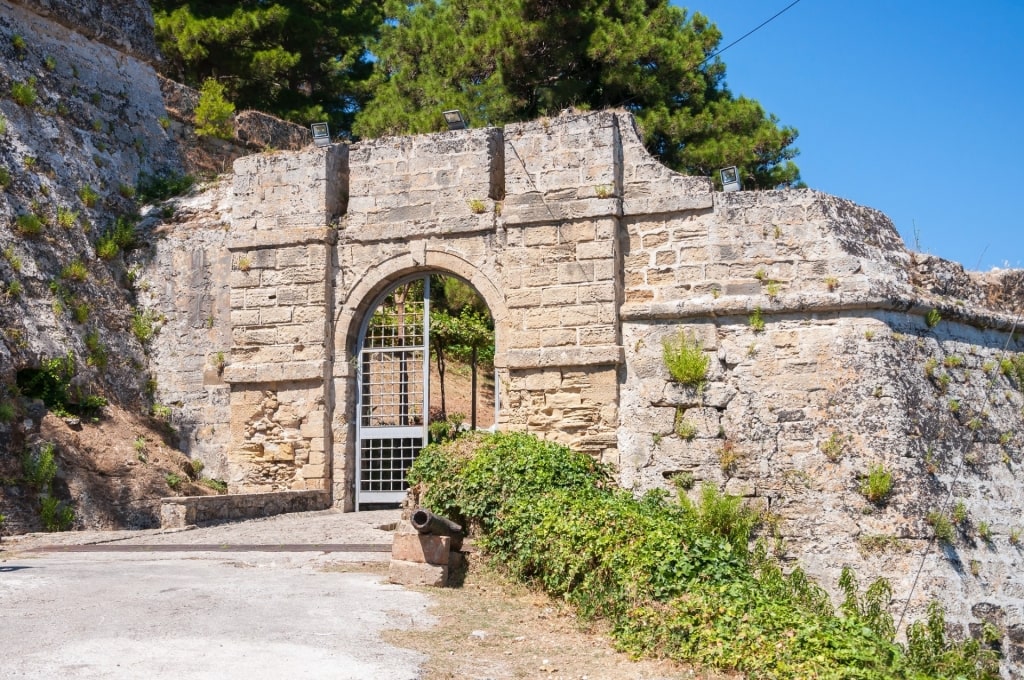
Venetian-Era Castle
Overlooking the port from a strategic position of Bochalis hill is the island’s Venetian-era castle, designed to offer resistance against marauding pirates.
A succession of earthquakes means only part of it is still preserved, but the bits that remain display heraldry carvings, including a winged lion of St Mark, the iconic symbol of the Venetian Republic.
As well as history, the museum has fine views out to the sparkling Ionian and overlooks the spot where Solomos wrote Greece’s national anthem Hymn to Liberty in May 1823 while listening to cannons firing as the war of independence against Ottoman rule raged across the Gulf of Patras.
Milk a Goat at Askos Stone Park
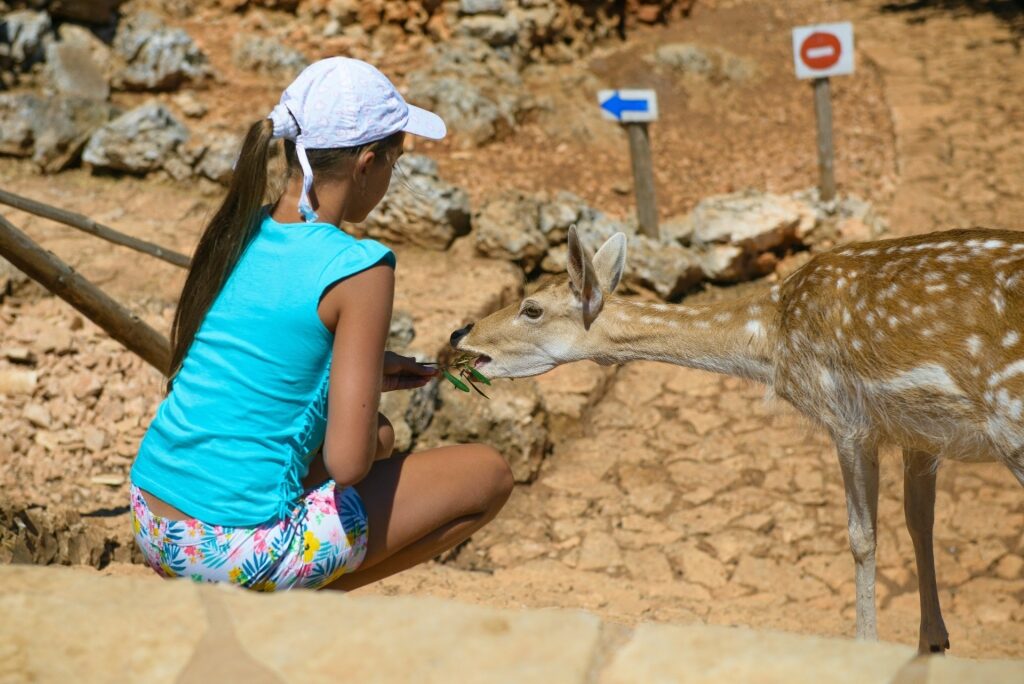
Askos Stone Park
Set in the northern part of the island, this vast park is home to more than 200,000 plants, as well as a number of stone structures, including centuries-old stables and water troughs that help house and water the park’s resident animals. These range from domestic cats and dogs to raccoons and deer.
The park’s helpful guides will show visitors around and there’s also the chance to help out gathering olives, feeding animals and even milking the goats.
Hike Skopos Hill
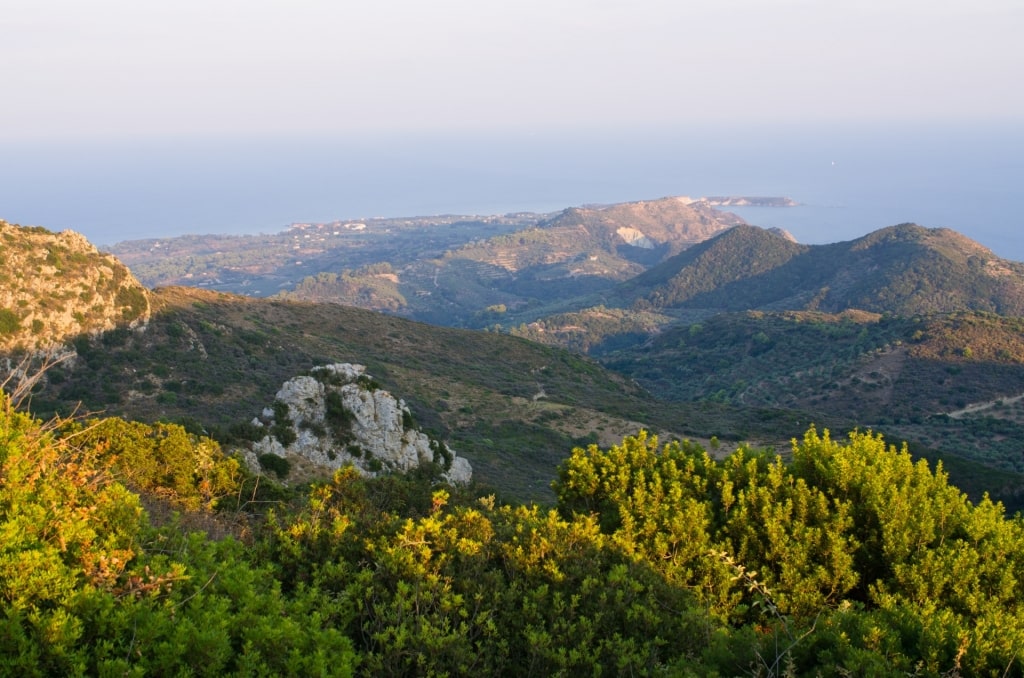
Skopos Hill
Those looking for a more physically challenging visit to the island can join fellow hikers on a climb to the 1,600-foot summit of Skopos Hill. Starting in the village of Kalamaki, the nine-mile trail passes through farm buildings with sheep, goats and chickens, as well as olive groves, canyons, and old quarries.
Although known as one of the best hikes in Greece, this spot is not for the faint of heart, especially when temperatures hit summer highs. However, the effort is rewarded with panoramic views over the island, the surrounding Ionian and the Peloponnese.
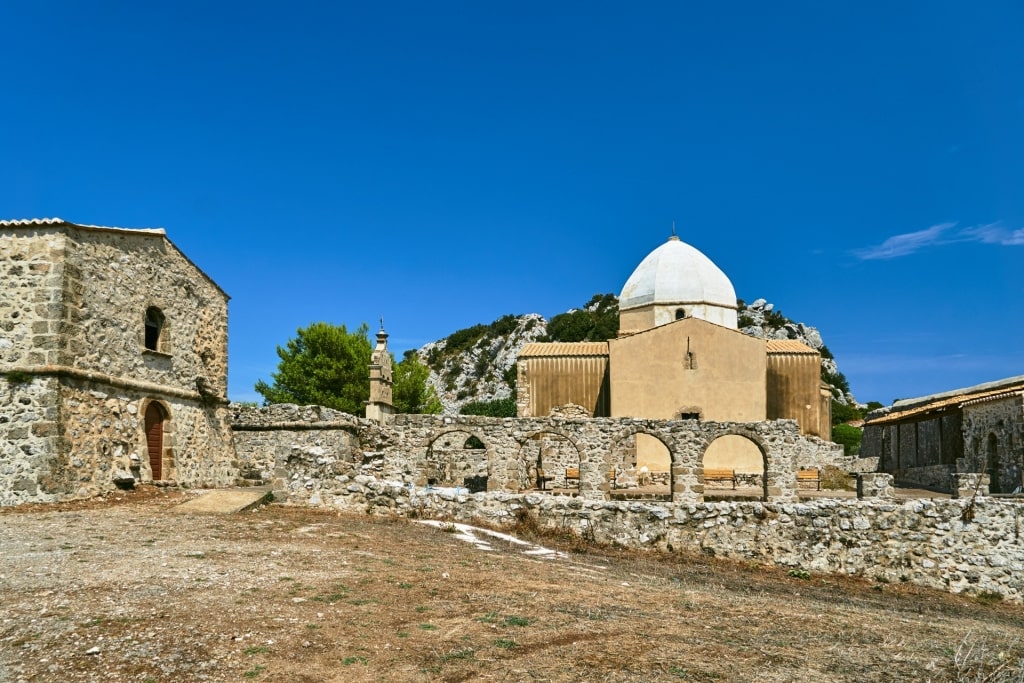
Panagia Skopiotissa
The summit is also home to the remains of the abandoned monastery Panagia Skopiotissa, a small church that can be opened on request, and a temple dedicated to Artemis, the Greek goddess of nature and the hunt.
Food & Drink
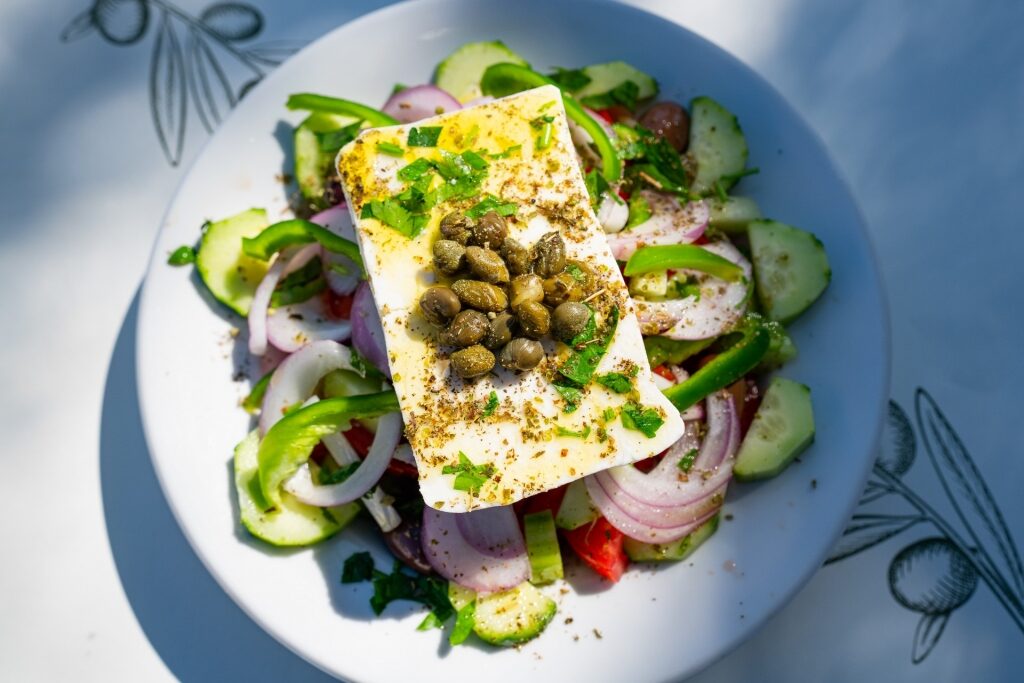
Greek salad
Organic, homegrown food features highly on Zakynthos where the islanders’ natural desire for self-sufficiency and environmental sensitivity has been further enhanced by the Marine Park’s work.
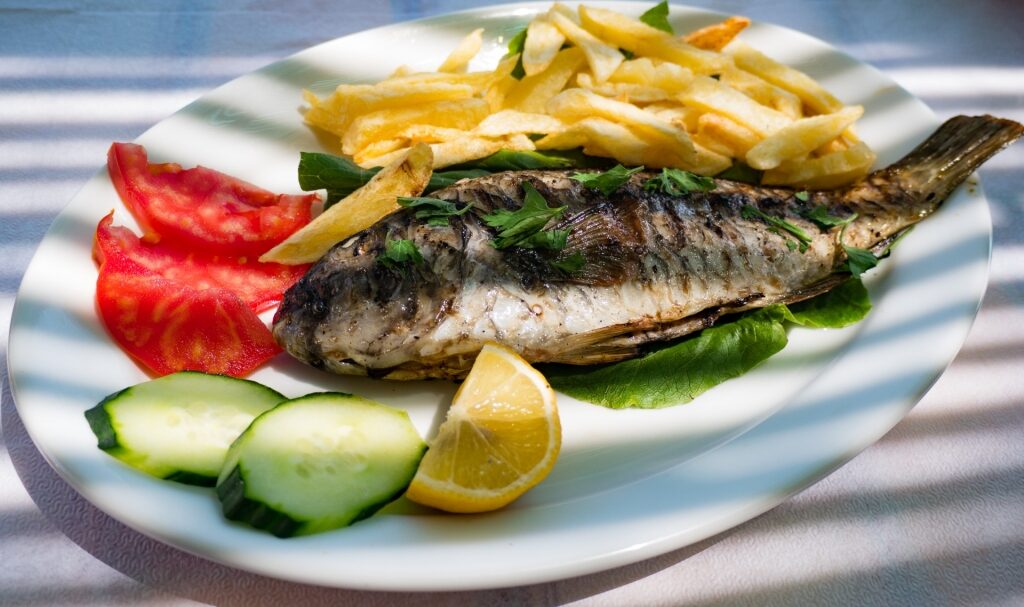
Grilled fish
While food is typically Greek—fresh salads, crumbly, tangy feta cheese and locally reared meat and wild game—there’s a strong fusion feel with many Italian influences, too.
Seafood is abundant but is seen by locals as a treat rather than an everyday meal, given that much of it is caught with traditional labor-intensive methods.
Those looking for a classic local dish could try stuffed rabbit stewed in wine. That wine is likely to be made at a local winery with grapes grown on the island, which even has its own Zante variety with a small, sweet fruit usually reserved for raisins.
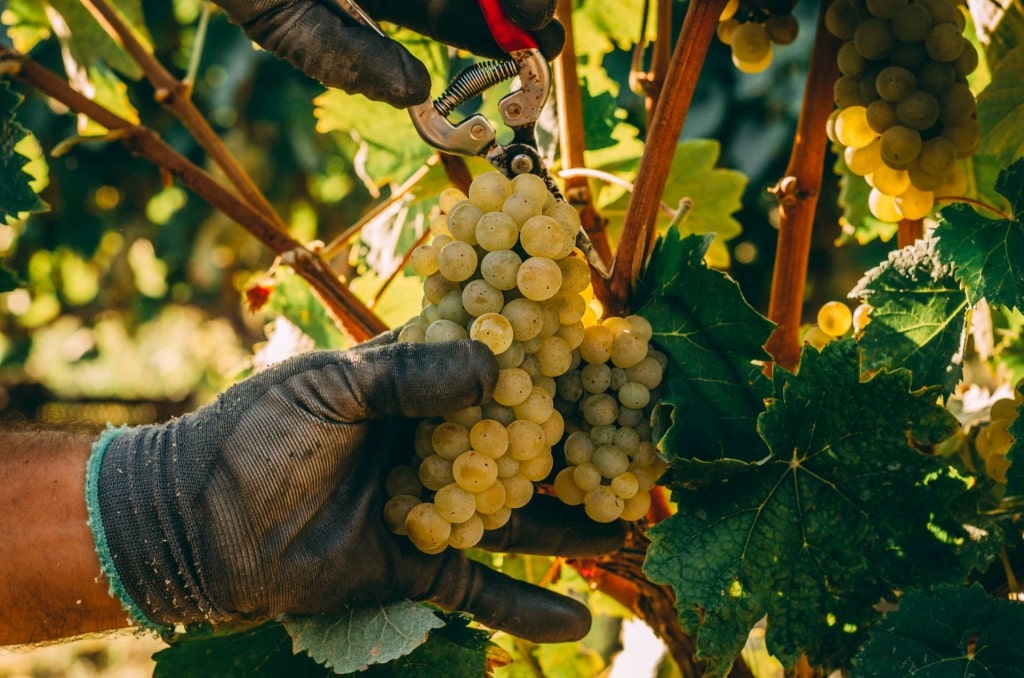
Grapes
A classic local choice is verdea, protected by the Greek wine law “Appellation by Tradition”. Dating from Venetian times, it takes its name from verde, the Latin word for green and involves picking the grapes early which gives the wine a distinctive sharpness and, aged in oak barrels, it complements the local seafood well.
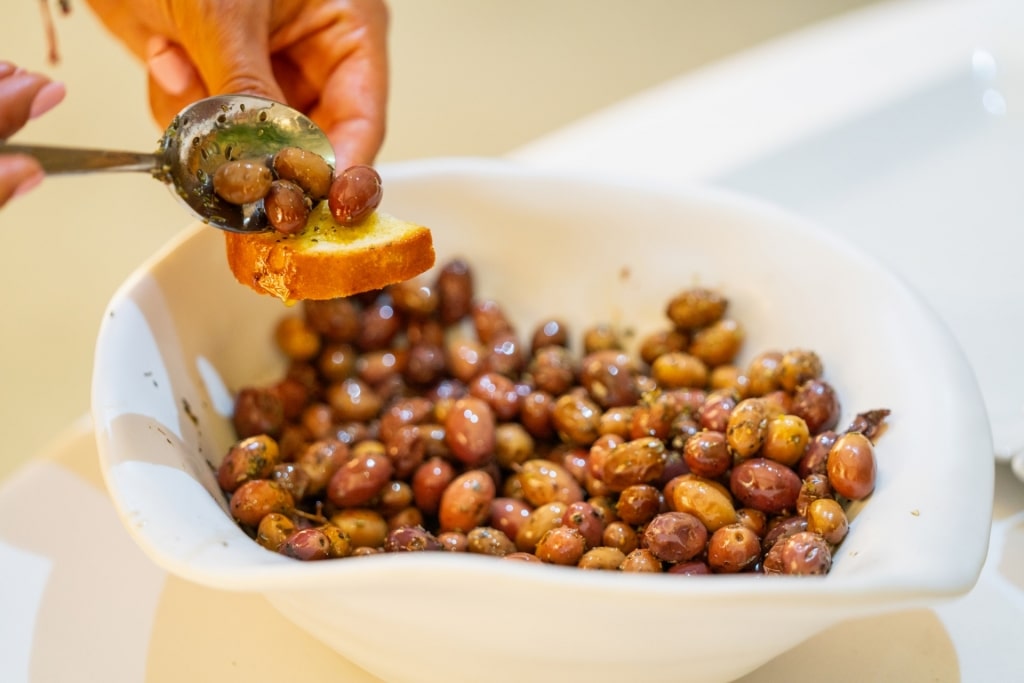
Olives
There are also several farms producing their own olive oil and visits can include tastings of wine, infused olive oils and food-wine pairings, as well as discovery tours detailing how organic fruits and vegetables are produced locally.
Best Time to Visit Zakynthos
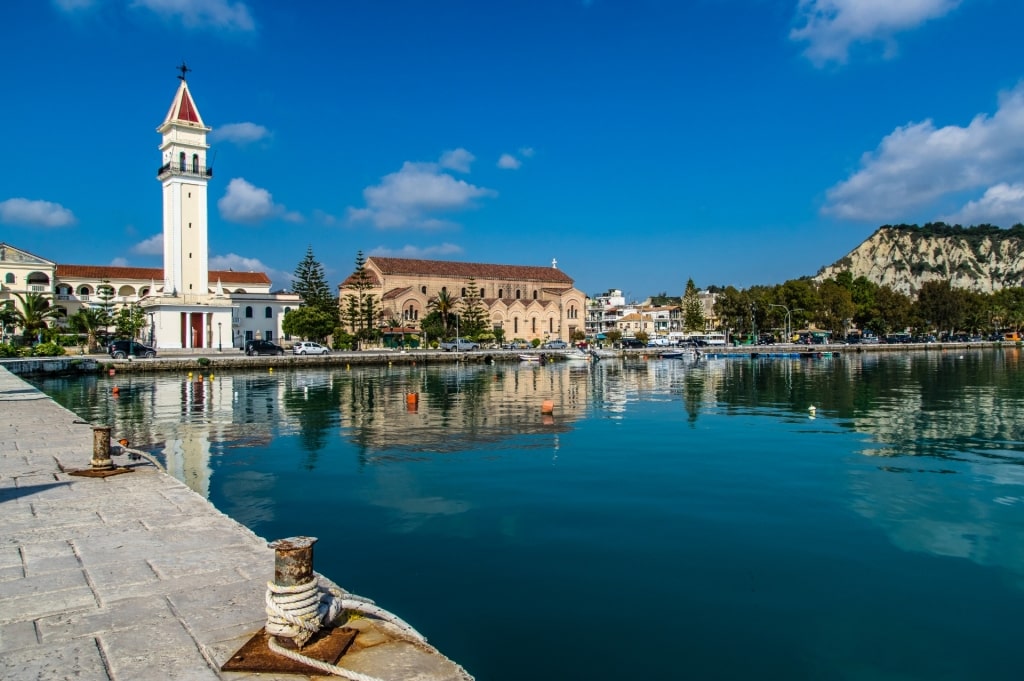
Zakynthos
Like most Greek islands, Zakynthos hibernates in winter and starts to wake in spring ready for the busy summer season.
Sun lovers will most enjoy a visit in July or August when temperatures reach their max and the beaches can be enjoyed to the full. These times can be busy, however, particularly around August 15, a Greek national holiday that tends to see those from the big cities heading for the islands en masse.
Increasingly, “shoulder season” trips are becoming popular in spring and fall and these are suited to those who love exploring and discovering more in a laid-back environment when temperatures are much cooler than the highs of summer.
You can swim in the sea well into September, too.
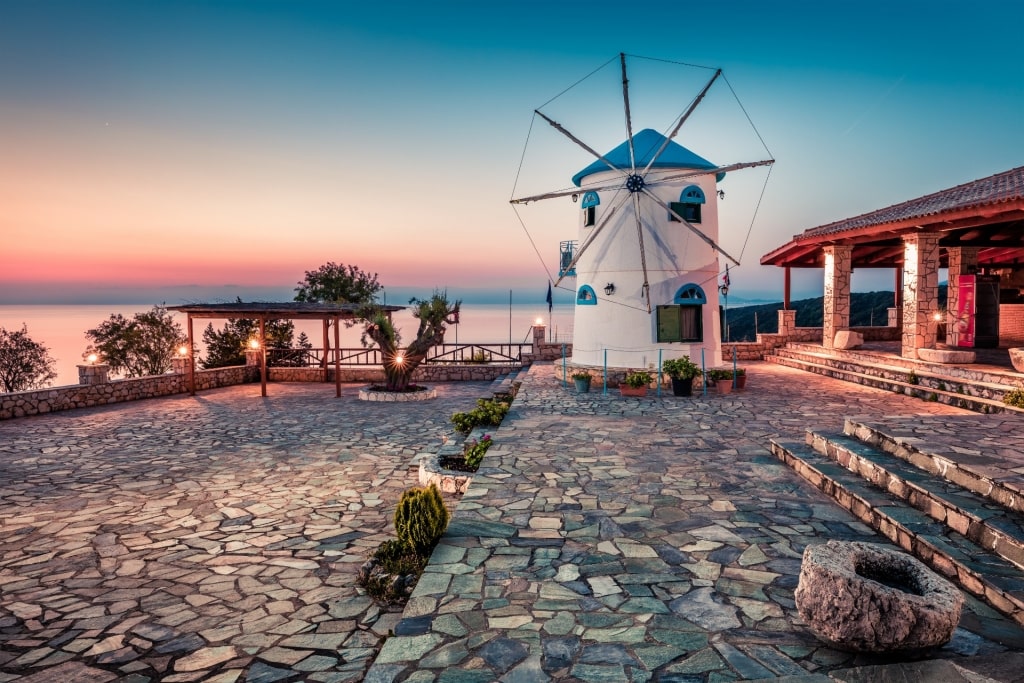
Zakynthos
Would you like to discover the gentle charm of Zakynthos, Greece for yourself? Browse our cruises to Zakynthos and plan your own Greek odyssey.



